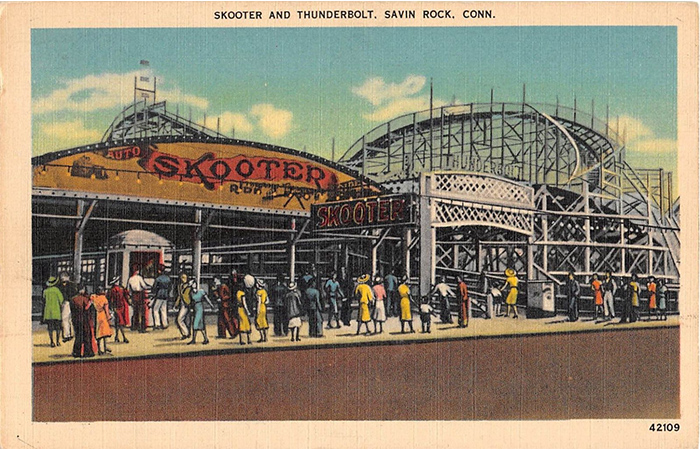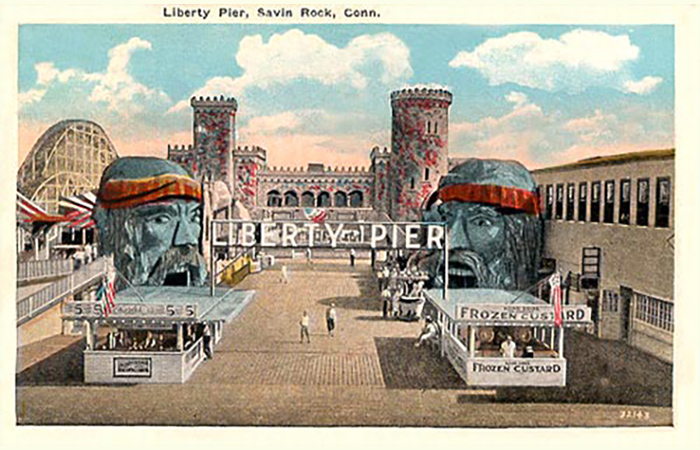Savin Name & History
The history of West Haven, Connecticut, from 1600 to 1900, is rich and closely tied to the development of New Haven Colony and the broader history of New England.

Savin juniper
(Juniperus sabina)

Eastern Red Cedar
(Juniperus virginiana)
Here’s an overview of key events and developments:
1600s: Early Settlement and Colonial Period
- Pre-European Contact: Before European settlers arrived, the area was inhabited by the Quinnipiac Native American tribe, who lived along the shoreline and engaged in fishing, hunting, and agriculture.
- 1638: English Puritans from the New Haven Colony, led by Theophilus Eaton and John Davenport, settled in the region, purchasing land from the Quinnipiac.
- 1648: The area now known as West Haven was originally part of New Haven but was called “West Farms” due to its agricultural use.
- 1665: Connecticut became a royal colony, incorporating New Haven Colony, which included West Farms.
- 1683: The first church, the First Congregational Church of West Haven, was established, reflecting the Puritan influence in the community.
1700s: Growth and the American Revolution
- 1719: West Farms officially became a separate parish from New Haven.
- 1779: During the American Revolution, West Haven was attacked by British forces under General William Tryon on July 5, 1779. British troops landed at Savin Rock and advanced inland, burning homes and engaging in skirmishes with local militias. Noah Webster, the famous lexicographer, was a child in West Haven at the time.
- Late 1700s: West Haven remained a primarily agricultural community, but small industries, including shipbuilding and fishing, began to develop.
1800s: Industrialization and Development
- 1822: West Haven became part of the town of Orange when it separated from New Haven.
- Mid-1800s: Industrialization led to the growth of small factories and mills, particularly in textiles and ironworks. The West River provided water power for early manufacturing.
- 1870s: West Haven became a popular seaside resort, with Savin Rock developing into a major tourist attraction. Hotels, restaurants, and amusement venues flourished, drawing visitors from across the state.
- 1873: A trolley line was introduced, improving transportation between West Haven and New Haven.
- 1892: West Haven officially incorporated as a borough within Orange, reflecting its growth and increasing urban character.
- Late 1800s: The amusement park at Savin Rock began attracting large crowds, setting the stage for its peak popularity in the early 20th century.
By the end of the 19th century, West Haven had transitioned from a small farming community to a growing industrial and resort town. It would continue to develop in the 20th century, eventually becoming an independent city in 1961.
Learn more about West Haven’s history from the West Haven Historical Society.

Skooter and Thunderbolt

Liberty Pier

Wilcox Restaurant
Savin Rock Amusement Park: West Haven’s Iconic Landmark
A Glimpse into the Past
Savin Rock Amusement Park — some of which was located where Eco Park is now — was once a premier destination for fun, entertainment, and relaxation along the Long Island Sound.. From its beginnings in the late 19th century to its closure in the 1960s, the park captured the hearts of visitors with its thrilling rides, lively attractions, and scenic shoreline views.
The Early Days
The origins of Savin Rock as a recreational area date back to the late 1800s when it became a popular seaside retreat. Initially a simple picnic ground, the location soon transformed into a bustling amusement park with the development of hotels, restaurants, and entertainment venues. By the early 20th century, Savin Rock had established itself as “Connecticut’s Coney Island,” attracting crowds from across the state and beyond.
Attractions and Entertainment
At its peak, Savin Rock featured a wide array of attractions designed to delight visitors of all ages. The park boasted:
- Thrill Rides: The “Flying Horses” carousel, roller coasters like the “Bobs” and “Thunderbolt,” and the “Coney Island Cyclone” offered adrenaline-pumping experiences.
- Games and Arcades: Numerous game booths lined the midway, challenging guests to win prizes through ring tosses, shooting galleries, and more.
- Funhouses and Sideshows: The “House of Fun” and “Mirror Maze” provided family-friendly entertainment, while sideshow acts showcased human oddities and feats of skill.
- Dining Options: Iconic eateries like Jimmie’s of Savin Rock served seafood specialties, including fried clams and lobster rolls, which became staples of the shoreline cuisine.
The Cultural Impact
Savin Rock was more than just an amusement park—it was a cultural hub that reflected the spirit of its era. The park provided a venue for live music, vaudeville performances, and fireworks displays that brought the community together. It served as a symbol of summertime joy and escapism during difficult times, such as the Great Depression and World War II.
Decline and Closure
Despite its popularity, Savin Rock faced challenges in the mid-20th century. The rise of automobile travel allowed families to explore new destinations, and modern amusement parks began drawing crowds away. Additionally, concerns over safety, maintenance, and urban development led to the park’s gradual decline.
In 1966, after nearly a century of operation, Savin Rock Amusement Park closed its gates for the final time. The land was redeveloped for residential and commercial use, and many of the park’s iconic structures were demolished.
Legacy and Preservation
Savin Rock Amusement Park remains a cherished part of Connecticut’s history, remembered fondly by those who experienced its charm and excitement. Its story is a testament to the power of nostalgia and the enduring appeal of seaside amusement parks in American culture. For residents and historians alike, Savin Rock symbolizes a bygone era of joy, community, and seaside splendor.
Though the amusement park no longer exists, the legacy of Savin Rock lives on in the memories of those who visited and in the cultural history of West Haven. The Savin Rock Festival is held annually and features rides, games, food, and music. Today, the shoreline provides a scenic recreational area for visitors to enjoy.
Resources
Savin Rock in West Haven, Connecticut, has inspired several books and articles that explore its rich history and cultural significance. They offer valuable insights into the history and legacy of Savin Rock, capturing the essence of its role in West Haven’s cultural heritage.
Books and Publications
Savin Rock Memories chronicles the history and adventures of Savin Rock from its early days up to its decline in the 1960s. It provides detailed accounts and politics surrounding the area, complemented by numerous photographs that capture the essence of the amusement park.
Savin Rock (Images of Modern America)delves into the transformation of the area surrounding Savin Rock in West Haven, tracing its evolution from farmland for colonists to a bustling amusement destination. It offers a visual journey through the park’s history with a collection of photographs and narratives.
Savin Rock Amusement Park (Postcard History Series) provides an in-depth look at the amusement park’s development, starting from the 1870s when George Kelsey constructed a pier to extend ferry service between opposite coastlines. It highlights the park’s significance as a seaside resort and its eventual decline.
City of West Haven: Village to Town covers the broader history of West Haven, including the development and impact of Savin Rock. It offers insights into the city’s transformation over the years.
Articles and Blog Posts
Savin Rock… Now and Then — A series of articles that breathe life into photographs of Savin Rock through storytelling. The articles explore various attractions of the amusement park, such as Peter Franke’s Fun House and Bishop’s Colonnade, providing a nostalgic look at the park’s past.
West Haven’s Savin Rock once ‘Connecticut’s Coney Island’ — A history of Savin Rock Amusement Park with locals’ stories and photos.
Images and Visual Resources
The Savin Rock Boardwalk — A video of Savin Rock narrated by Gil Simmons, WTNH Ch. 8.
Savin Rock Slide Show – Savin Rock landmarks are placed where they used to be in updated photos of today.
The West Haven Historical Society and the West Haven Public Library may have additional visual materials and publications.
